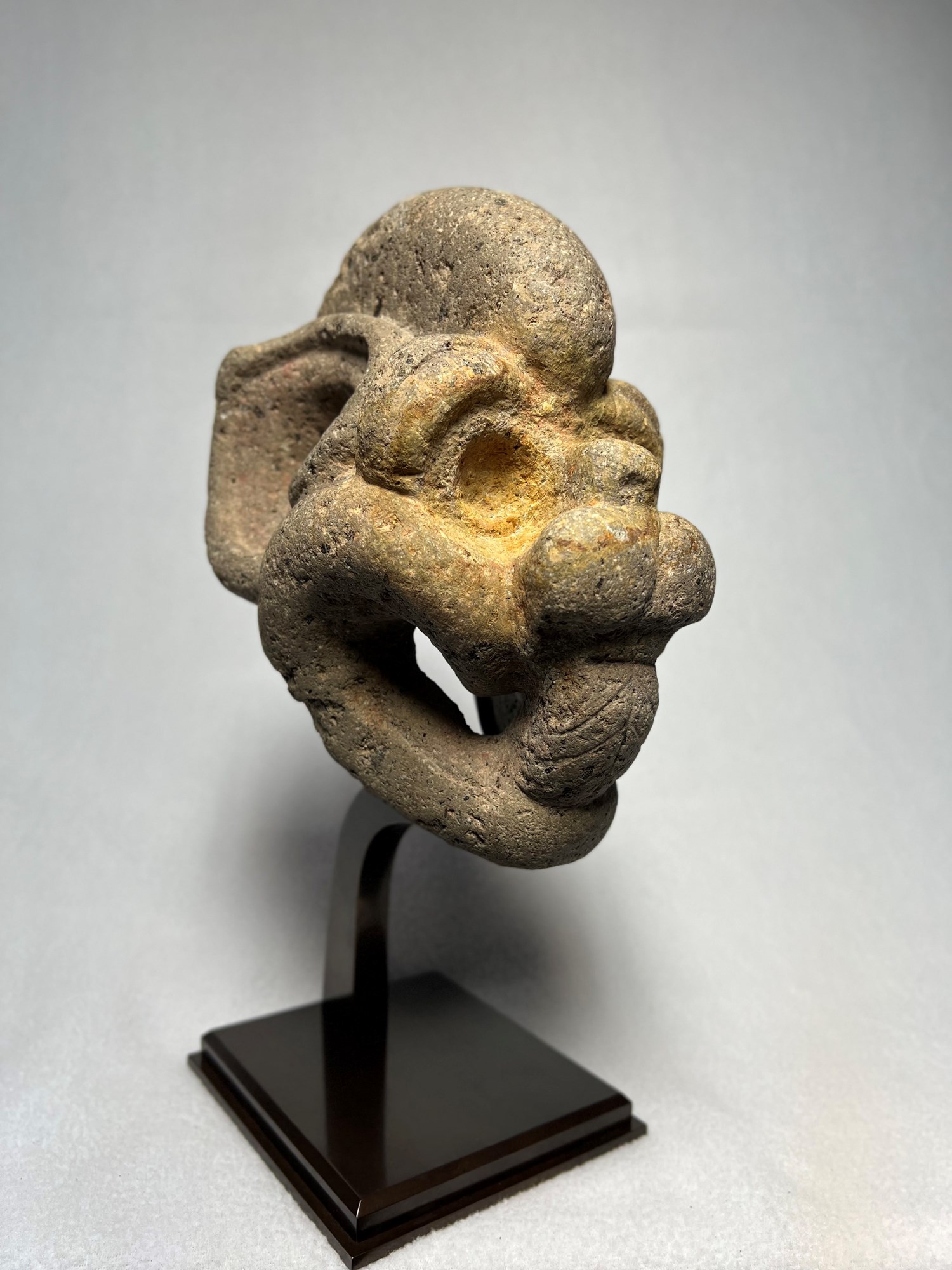VERACRUZ - Hacha
Date 450 - 750 A.D.
Dimension 20 x 12.7 x 14.5 cm (7⁷/₈ x 5 x 5³/₄ inches)
Ceremonial hacha of a jaguar with tongue - VERACRUZ - MEXICO - 450 - 750 AD - Pre-Columbian
Height: 20 cm
Width: 12.7 cm
Depth : 14.5 cm
Volcanic tuff with important traces of cinnabar. Eyes: Trace of iron oxide due to an incrustation of pyrite
Documents (originals) provided to the acquirer:
- Certificate of authenticity of the Galerie Mermoz,
Santo Micali, Expert, (CNE) Compagnie Nationale des Experts
- Certificate of Art Loss Register
- Passport of free circulation
- Microanalysis report
- Invoice
This singular work is a ceremonial axe representing a jaguar head, from the Veracruz region in the centre of the Gulf coast. This type of sculpture was used in ball-playing tournaments, a ritual sport practised throughout Mesoamerica, with considerable political, social and religious implications. They are associated with two other types of sculptures known as yoke and palm.
This piece is distinguished by its exaggerated forms, sculpted in strong relief, a treatment that gives great strength to this feline head that could evoke a supernatural being. The animal has large raised, pointed, deeply hollowed ears, separated by a massive crest with streaks on the sides. The superciliary arches are rounded and prominent and also streaked on the front. The eyes are round and hollow. The yellow traces visible in the cavities come from pyrite, a brilliant mineral considered sacred, which was once to be inlaid.
Date: 450 - 750 A.D.
Dimension: 20 x 12.7 x 14.5 cm (7⁷/₈ x 5 x 5³/₄ inches)
More artworks from the Gallery









